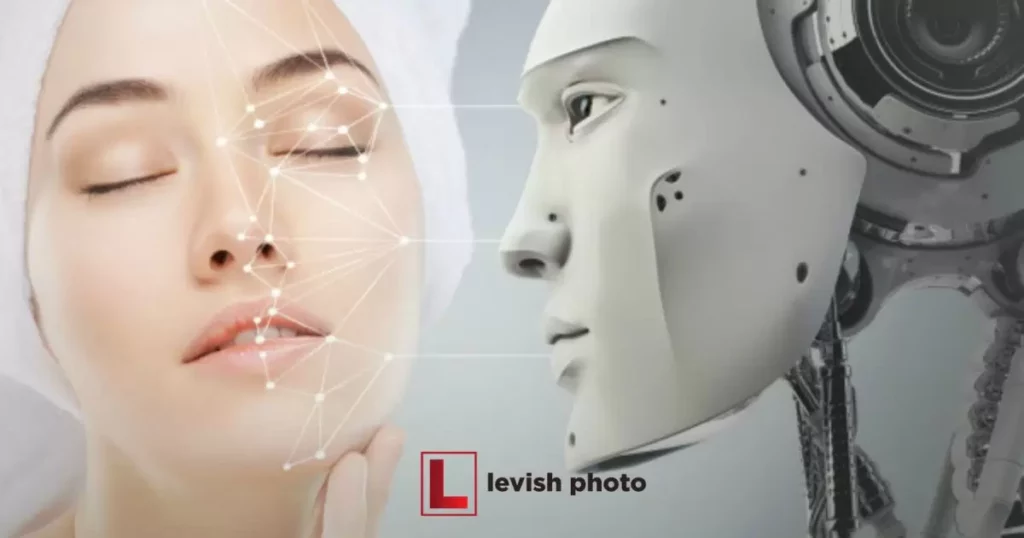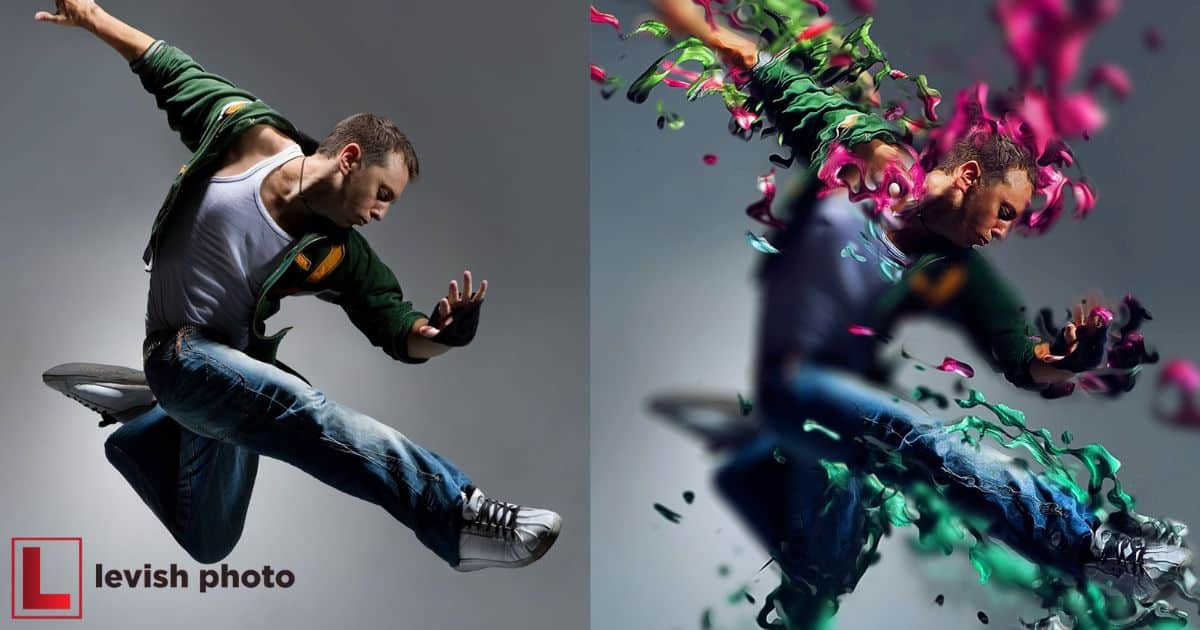AI photography refers to the use of artificial intelligence (AI) in enhancing and automating various aspects of the photographic process. Through algorithms and machine learning, AI photography involves utilizing intelligent systems to optimize image capture, editing, and enhancement.
Curious about how does AI photography works? Imagine cameras equipped with AI that can recognize scenes, adjust settings, and even suggest composition techniques in real-time. AI algorithms analyze the environment, detect subjects, and determine optimal camera settings.
AI in photography operates through sophisticated algorithms that process vast amounts of data. From facial recognition for sharper portraits to noise reduction for clearer images, AI-enabled cameras and editing software harness machine learning to continually improve and adapt.
Evolution Of Photography And Ai Integration
Photography has journeyed from the early days of black-and-white images to the digital era, where AI plays a pivotal role. Initially, capturing a moment required precise settings and technical knowhow. With AI integration, cameras have become smarter.
They can now recognize scenes, adjust settings, and even suggest composition techniques. This integration represents a significant shift, empowering both amateurs and professionals to capture stunning photos effortlessly. The collaboration between photography and AI has transformed how we see and capture the world around us.
Advancements in Image Recognition Technology
The strides made in image recognition through AI have been remarkable. Cameras equipped with this technology can swiftly identify subjects, whether it’s a person, a pet, or a scenic landscape. This capability allows for accurate focus and exposure, ensuring every detail is captured vividly.
AIdriven image recognition goes beyond just identifying subjects, it assists in scene recognition, adjusting settings accordingly for optimal image quality. This advancement has revolutionized how cameras perceive and interpret the visual world, enabling sharper, more focused, and precisely captured images.
Enhanced Image Quality through AI Algorithms
AI algorithms have significantly elevated image quality. These sophisticated algorithms process data swiftly, enhancing details and reducing noise levels in photographs. They work behind the scenes, subtly refining colors, contrast, and sharpness to produce visually stunning images.
AI’s ability to predict and compensate for certain flaws, like lens distortions, contributes to overall image perfection. This enhancement in image quality has not only simplified the photography process but has also elevated the standard of images captured, ensuring breathtaking results with every click.
Automated Settings and Scene Recognition
In the realm of photography, AI has revolutionized how cameras interpret scenes and adjust settings. Automated settings and scene recognition utilize AI algorithms to swiftly analyze the environment, identifying elements like landscapes, portraits, or lowlight conditions.
These algorithms optimize camera settings, from exposure levels to focus, ensuring each shot captures the essence of the scene without the need for manual adjustments. Scene recognition helps cameras adapt to various scenarios, such as detecting a sunset to adjust color balance or recognizing faces to set focus and exposure accordingly.
Benefits of AI in Portrait Photography
AI’s influence in portrait photography is remarkable, offering a myriad of benefits. One significant advantage lies in facial recognition technology, enabling cameras to pinpoint and focus on faces with precision.
This ensures that subjects remain the focal point, resulting in sharper and more captivating portraits. AI aids in enhancing facial features, smoothing skin tones, and refining details, contributing to stunning, professional-grade images.
Revolutionizing Landscape Photography with AI
Landscape photography sees a significant shift with AI integration, particularly in recognizing and enhancing scenic elements. AI algorithms analyze landscapes, identifying key components such as mountains, water bodies, or forests, and adjusting settings to capture the richness of these scenes.
AI assists in overcoming challenges encountered in landscape photography, such as dynamic lighting conditions or complex compositions. By automatically adjusting exposure, enhancing contrast, and refining details, AI-driven tools enable photographers to capture the essence and grandeur of landscapes more effectively.
AIDriven Editing and PostProcessing Techniques

The advancement of photography has been significantly influenced by AI-driven editing. These technologies utilize intelligent algorithms to automatically enhance colors, adjust exposure, and reduce noise. They recognize patterns and understand image content, enabling precise modifications to achieve optimal results.
AI facilitates advanced post-processing techniques previously reserved for experts. It intelligently recognizes and segments elements within an image, allowing for selective edits and background adjustments. This technology also assists in removing unwanted objects or distractions seamlessly.
Tricks for Optimizing AI Photography Results
Optimizing AI photography involves leveraging the technology’s capabilities effectively. One essential trick is understanding the camera’s AI-driven features, such as scene recognition and smart settings adjustment.
By familiarizing themselves with these functions, photographers can capitalize on the camera’s ability to identify scenes and automatically optimize settings for the best possible shot. Experimenting with different AI modes and understanding their impact on image quality helps in tailoring the results to suit specific preferences or shooting conditions.
Steps in Using AI for Photo Enhancement
Using AI for photo enhancement involves a structured approach to maximize its potential. The initial step is selecting the right AI-powered software or tool that aligns with specific editing goals. Once the software is chosen, understanding its features and functionalities becomes crucial.
Learning how AI algorithms operate, including their capabilities in noise reduction, sharpening, and color correction, empowers photographers to make informed decisions during the enhancement process. The process involves feeding the AI tool with the desired image or dataset for analysis and enhancement.
AI’s Role in LowLight Photography
In low light conditions, AI plays a pivotal role in capturing clearer and more detailed images. Through advanced algorithms, AI-powered cameras adapt to low light environments by adjusting exposure settings, enhancing image brightness without compromising quality.
These algorithms intelligently reduce noise and graininess, resulting in sharper photos even in challenging lighting situations. AI’s ability to analyze and process data allows it to recognize lowlight scenarios, enabling cameras to optimize image quality by capturing more light and improving overall clarity and detail.
AIDriven Composition Suggestions
AI offers valuable composition suggestions that can significantly enhance the visual appeal of photographs. Using pattern recognition and data analysis, AI algorithms provide real-time feedback on framing, rule of thirds, and other compositional elements.
These suggestions assist photographers in capturing well-balanced and aesthetically pleasing images. AI-driven composition tools analyze scenes, identify key subjects, and propose adjustments to create more impactful photos.
Future Prospects and Innovations in AI Photography
The future of AI in photography holds exciting prospects and innovations. One such development involves further advancements in AI-driven image recognition. This progression aims to enhance the accuracy and efficiency of object and scene recognition, allowing cameras to adapt more seamlessly to diverse environments and subjects.
| Future Prospects | Innovations in AI Photography |
| AIEmbedded Cameras | Advanced scene recognition capabilities |
| Realtime Collaborative AI | Multi Device synchronization for synchronized shooting |
| Neural Network Expansion | Integration of AI with virtual and augmented reality |
| AI in Visual Storytelling | Enhancements in visual storytelling through AI assistance |
| Personalized Photography Experiences | Customized AI settings for individual preferences |
| Ethical Considerations | Addressing ethical implications of enhanced photography |
Innovations in AI algorithms will likely focus on refining editing and enhancement capabilities. Future AI technologies may offer more sophisticated and personalized editing options, tailoring enhancements to individual styles and preferences.
FAQs
How does AI improve photo quality?
AI enhances photo quality by using algorithms to reduce noise, adjust settings, and enhance details, resulting in sharper, clearer, and more vibrant images.
Can AI suggest photography composition techniques?
Yes, AI can analyze scenes and offer suggestions for composition, guiding users to create well-composed and visually appealing photographs.
Is AI photography accessible to beginners?
Absolutely, AI simplifies photography by automating settings and offering user-friendly features, making it accessible and enjoyable for beginners.
Does AI in photography raise ethical concerns?
The use of AI in photography prompts discussions about privacy, consent, and responsible AI application, leading to ethical considerations within the field.
Conclusion
AI’s integration into photography marks a groundbreaking evolution, streamlining the process and enhancing image quality. Its ability to automate settings, suggest compositions and refine details simplifies the art of photography, making it more accessible to enthusiasts of all levels.
With these advancements come ethical considerations, urging us to deliberate on the responsible and conscientious use of AI in photography. The fusion of AI and photography signifies an exciting frontier that promises innovation, creativity, and a new dimension to visual expression.
